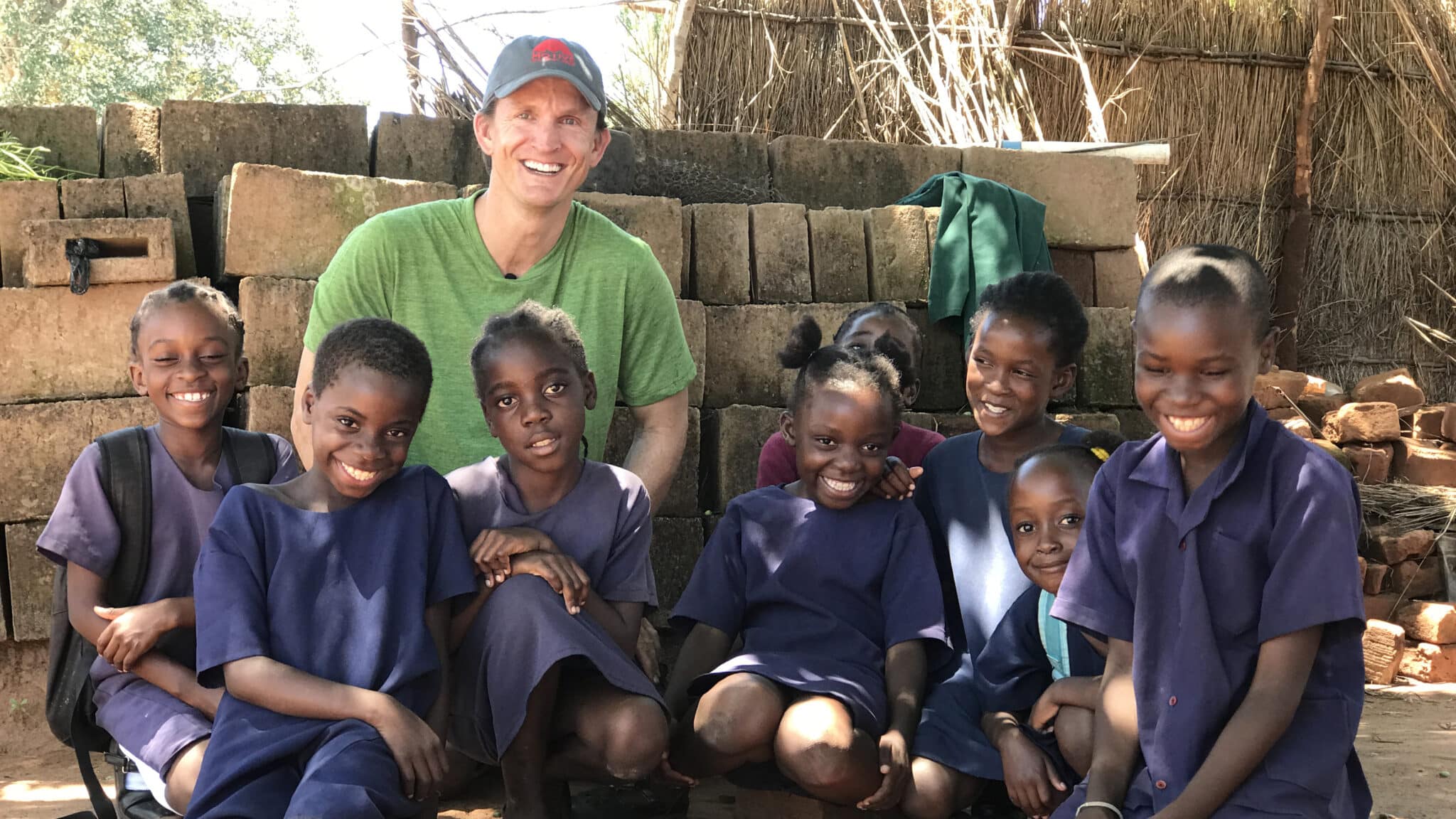
Fort Worth Realtor finds fulfillment in building a home in Africa for every house his agency sells
By Scott Nishimura
Photo courtesy of John Staab
John Staab had been working in the private banking unit of a major bank for years when he became inspired by the story of Toms shoes, which gives one-third of its profits to what it calls “grassroots goods.”
Staab, who holds a real estate license and a long interest in entrepreneurship, wondered whether the same concept — give away a pair of shoes for every pair sold — could be put to work in real estate.
“I had been in the business world for 15-18 years, but there was something missing,” said Staab, who was featured in 360West a few years ago when he was getting started in Africa. “It didn’t have a giveback element.” And he wanted an adventure.
“Of course, you can’t do it in the United States,” he said. So he looked outside the U.S. to a developing country.
In 2017, Staab founded Motive Real Estate in Fort Worth, an agency that builds a home in an African village out of the commission for every house it sells here. More than five years in, the small company, working with The Butterfly Tree nonprofit in the United Kingdom, is nearing 250 homes built in villages in a “chiefdom” near Livingstone, Zambia and Victoria Falls.
“This is a top-line expense,” Staab said. “We make a closing, and funds are allocated to build a house.”
The homes are modest, framed with local timber on dirt floors; enclosed with earthen walls made of sand, mud and other materials; and roofed with thatch. There’s no power, plumbing or windows. Just a door to provide security. “And then we give them a lock,” Staab said. “There’s an element of freedom in that.”
Tribal elders decide who’s in most need of a home to be built, Staab said. “Once the need is identified, community members know what to do.”
Teams — including high schoolers paid for their work — cut down timber for poles that they drive into the ground to build the frame. Local women build the walls. Each home is about 250-300 square feet, includes a patio, sleeps six to eight people (mostly children), and is designed to last eight to 10 years, Staab said. “They don’t hang out inside. It’s pretty much for storing things and sleeping.”
The structures are round, to deter snakes. “Snakes like corners,” Staab said. “They can’t find that in a round structure.”
Staab tries to visit once a year to help build the homes. “It takes almost three days to get there,” traveling through airports such as London, Dubai or Johannesburg, he said. He usually stays in a backpackers’ hostel in Livingstone. “If you lay down, you’re done,” he said.
Since this part of Africa was formerly in British possession, most villagers speak English, which is important to facilitate the project, Staab said. Villagers use rudimentary, often handmade, tools to build the houses. Staab buys tools in Livingstone, 20-45 miles from the villages, to donate. He rents cars there or uses taxis. “Like somebody who’s got a 1983 Datsun.”
Are the village youth ambitious or know enough to be ambitious? Staab puts on presentations for the young villagers about jobs they might pursue. They typically want to become teachers, nurses, physicians, attorneys (“I don’t know where they come up with that.”), farmers and soldiers, he said. “Those are the only things they’ve seen.”
